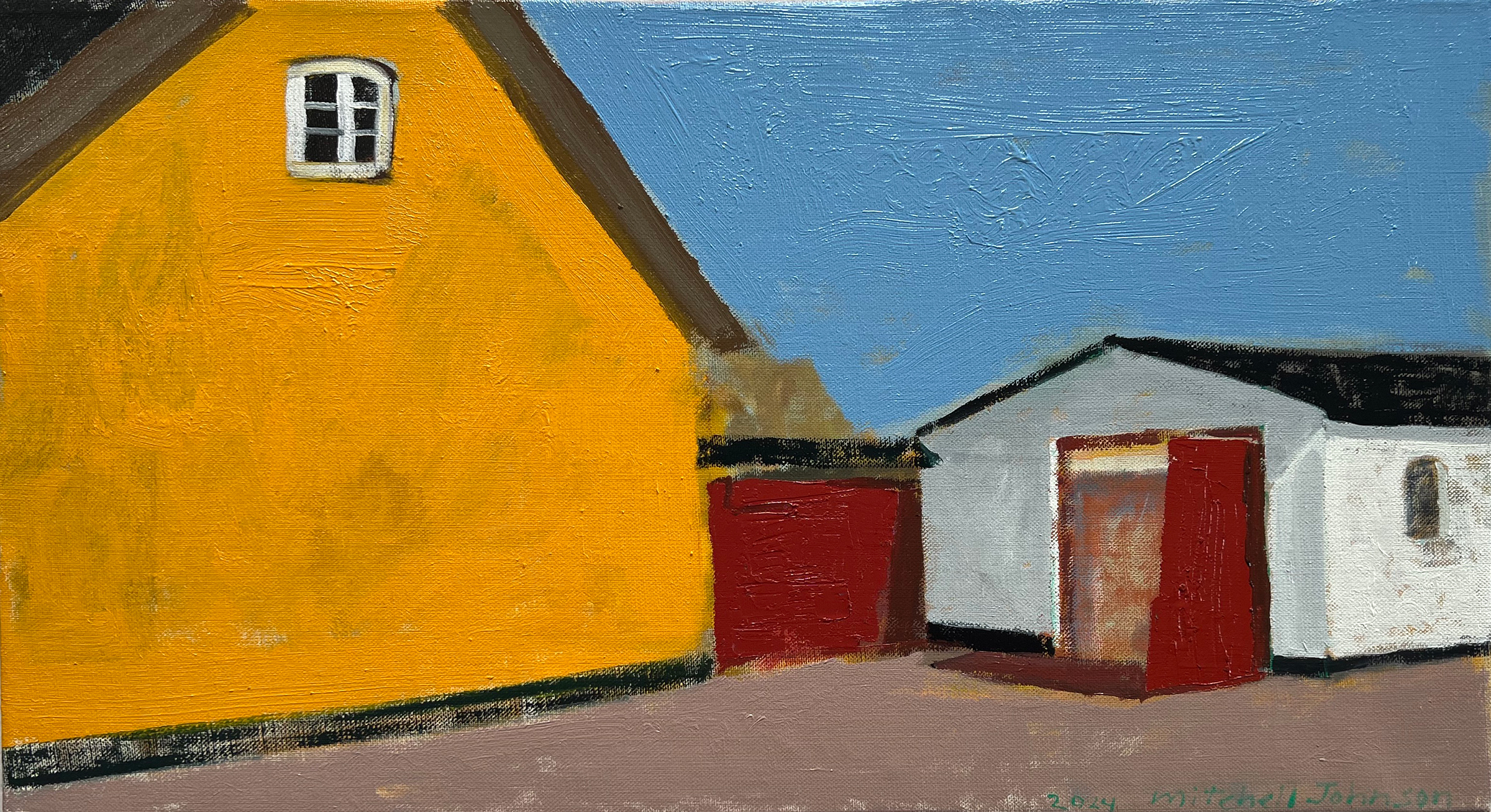Truro Center for the Arts at Castle Hill in Massachusetts presents an exhibition of small paintings by California artist Mitchell Johnson from September 4 through 15. The gallery is open daily from 12 to 5pm, with an artist reception on Thursday, September 5, from 4 to 6pm. Titled Where The Colors Are (Selected Paintings 1989–2024), the show features works from New England, Europe, New York, Newfoundland, and California.
Art critic Donald Kuspit reviewed Johnson’s work in 2023 in Whitehot Magazine, noting his concerns for both art history and abstraction:
Art history insidiously echoes in — ingeniously informs — all of Johnson’s works. Johnson is a master of abstraction, as his oddly constructivist paintings show, but of unconscious feeling, for his geometry serves to contain and with that control the strong feelings implicit in his strong colors. Apart from that, his paintings are art historically important, because they seamlessly fuse abstraction and realism, which Kandinsky tore apart to the detriment of both even as he recognized that they were implicitly inseparable, tied together in a Gordian knot, as they masterfully are in Johnson’s paintings.
In a 2012 review for Provincetown Arts, writer Chris Busa explored the approach Johnson takes in his work:
If many of Johnson’s paintings are titled after the places that inspired them, no such places actually exist. Each one is a collage of compressed intimacies spread out over the months it takes to paint them. He has done what Edwin Dickinson called “Premier Coup”, in which a painting is completed outdoors in one blow. Yet his typical practice is to hold a painting for several months, or more, in the studio, to see if a painting stands the test of repeated looking, often involving the process of memory revision, where a succession of impressions gained over weeks or months is expressed as continuous flow.
In 1990, Mitchell Johnson moved to Palo Alto, California, to work for the artist Sam Francis shortly after finishing his MFA at Parsons School of Design in New York City. He spent the 1990s peregrinating between California, New York, and Europe as he created brushy landscapes and figure paintings. In the 2000s, repeated trips to the Danish island of Bornholm and a chance viewing of a Josef Albers/Giorgio Morandi exhibition in Bologna led to a decisive change in his approach. Johnson shifted towards a more consciously organized picture plane, where larger shapes serve as scaffolding for commentary on the tension between manmade and naturally occurring color. His paintings are in the permanent collections of over 30 museums.
For more information, visit mitchelljohnson.com and follow him on Instagram at @mitchell_johnson_artist.
In addition to the Truro exhibition, Johnson’s paintings are the subject of a museum retrospective in Cap d’Ail, France, at Musée Villa les Camélias through September 29.


